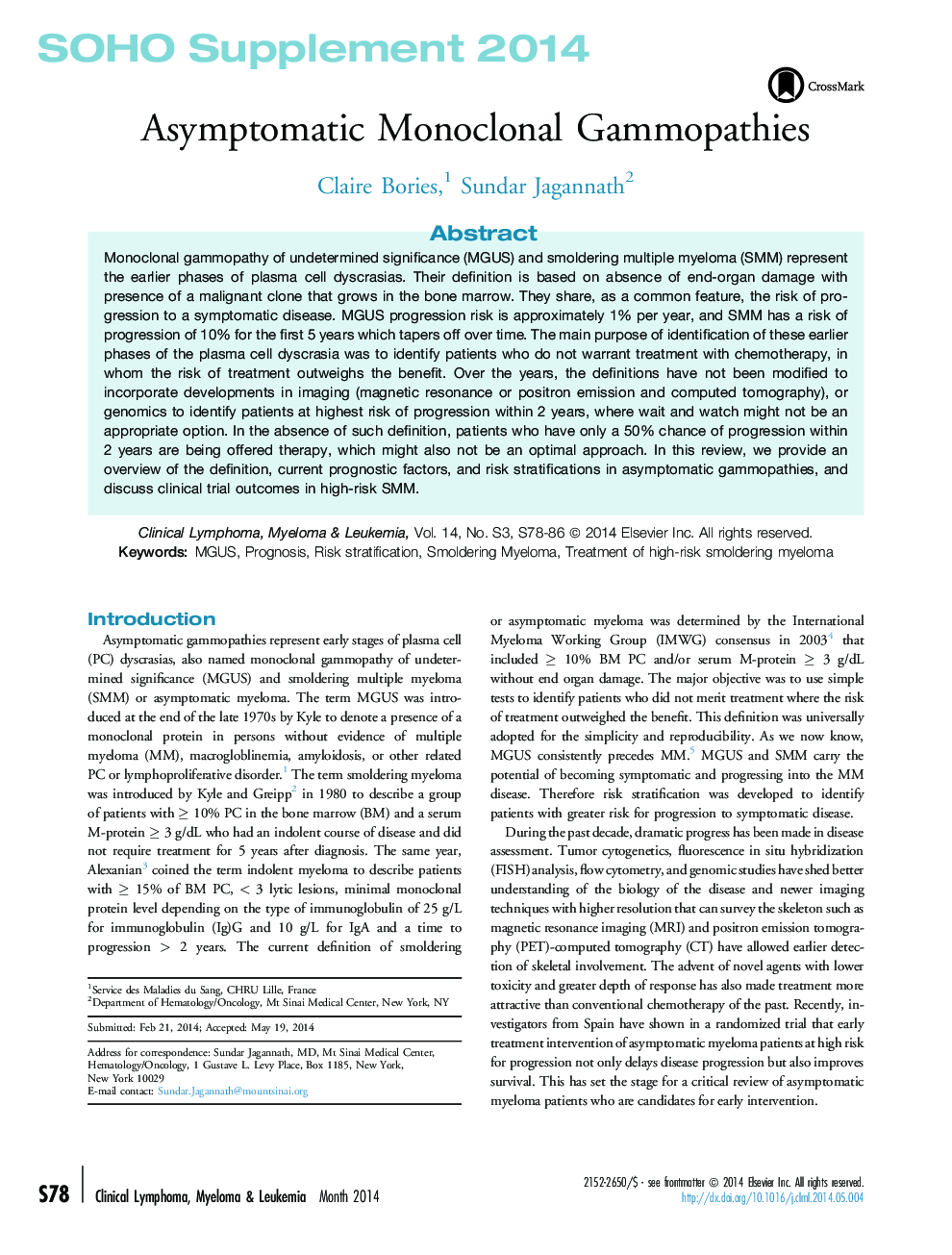| کد مقاله | کد نشریه | سال انتشار | مقاله انگلیسی | نسخه تمام متن |
|---|---|---|---|---|
| 2754449 | 1149784 | 2014 | 9 صفحه PDF | دانلود رایگان |
Monoclonal gammopathy of undetermined significance (MGUS) and smoldering multiple myeloma (SMM) represent the earlier phases of plasma cell dyscrasias. Their definition is based on absence of end-organ damage with presence of a malignant clone that grows in the bone marrow. They share, as a common feature, the risk of progression to a symptomatic disease. MGUS progression risk is approximately 1% per year, and SMM has a risk of progression of 10% for the first 5 years which tapers off over time. The main purpose of identification of these earlier phases of the plasma cell dyscrasia was to identify patients who do not warrant treatment with chemotherapy, in whom the risk of treatment outweighs the benefit. Over the years, the definitions have not been modified to incorporate developments in imaging (magnetic resonance or positron emission and computed tomography), or genomics to identify patients at highest risk of progression within 2 years, where wait and watch might not be an appropriate option. In the absence of such definition, patients who have only a 50% chance of progression within 2 years are being offered therapy, which might also not be an optimal approach. In this review, we provide an overview of the definition, current prognostic factors, and risk stratifications in asymptomatic gammopathies, and discuss clinical trial outcomes in high-risk SMM.
Journal: Clinical Lymphoma Myeloma and Leukemia - Volume 14, Supplement, September 2014, Pages S78–S86
